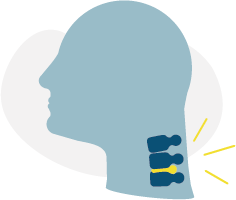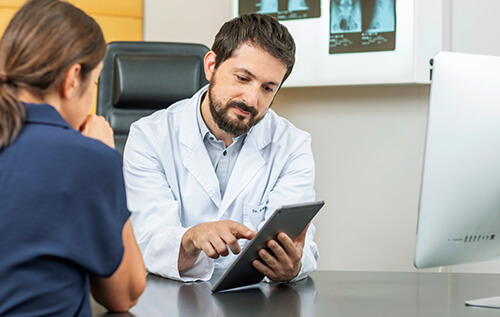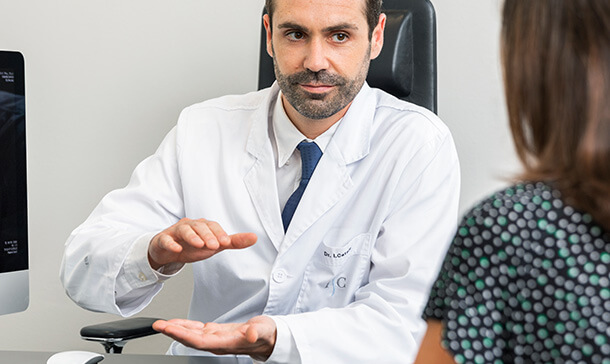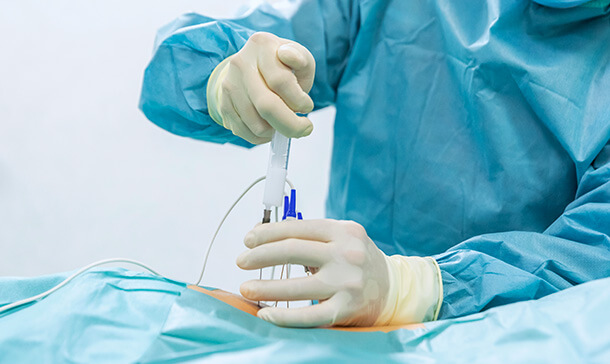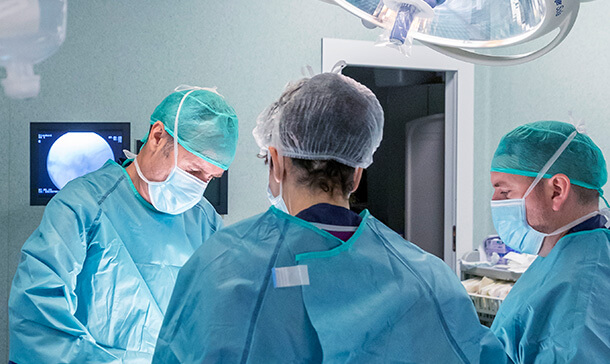In most cases, herniated discs are caused by natural wear and tear of the disc, called disc degeneration. In other words, as the years go by, the discs are less flexible and, therefore, more prone to damage
In the case of the cervical discs, it is important to remember that they subject to constant tension and bear a lot of stress. This area often becomes stiff and painful as the day goes on because the muscular and cervical osteoligamentous structures are forced by carrying weights improperly.
Injuries in this area are one of the problems that we encounter most frequently and can range from a muscle contraction to a herniated disc or osteoarthritic osteophytes that produce compression on the medulla or nerves.
The specific causes cannot always be discovered, as they may be the result of a combination of several factors. However, in most cases they are due to poor postural habits and overexertion. It should also be borne in mind that there are certain risk factors for developing a herniated disc:
Genetics
Genetic predisposition to disc herniation.
Work
People with jobs that require physical exertion and strenuous movement are more prone to disc hernia.
Excess body weight
Excess weight and obesity can overload the discs and encourage their degeneration, especially the lumbar discs.
Tobacco
Use of tobacco is related to a lower oxygen supply to the disc, which favors its deterioration.
Injury
An accident, blow, or fall can also cause a disc hernia, although this is less frequent.
Thus, general recommendations to prevent this pathology include: taking care of posture, exercising to keep muscles strong, trying to maintain a healthy weight and avoiding tobacco. These measures will also contribute to overall good health.

